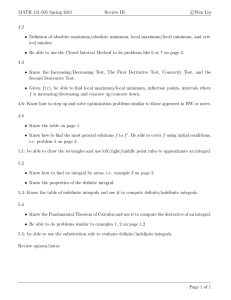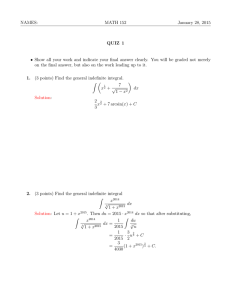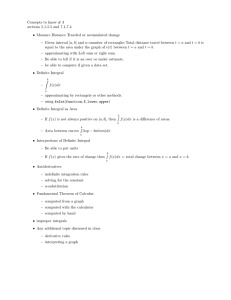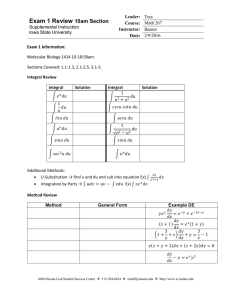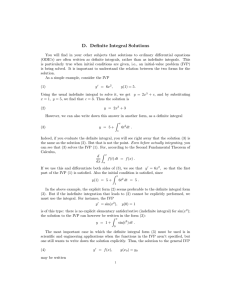D. Definite Integral Solutions
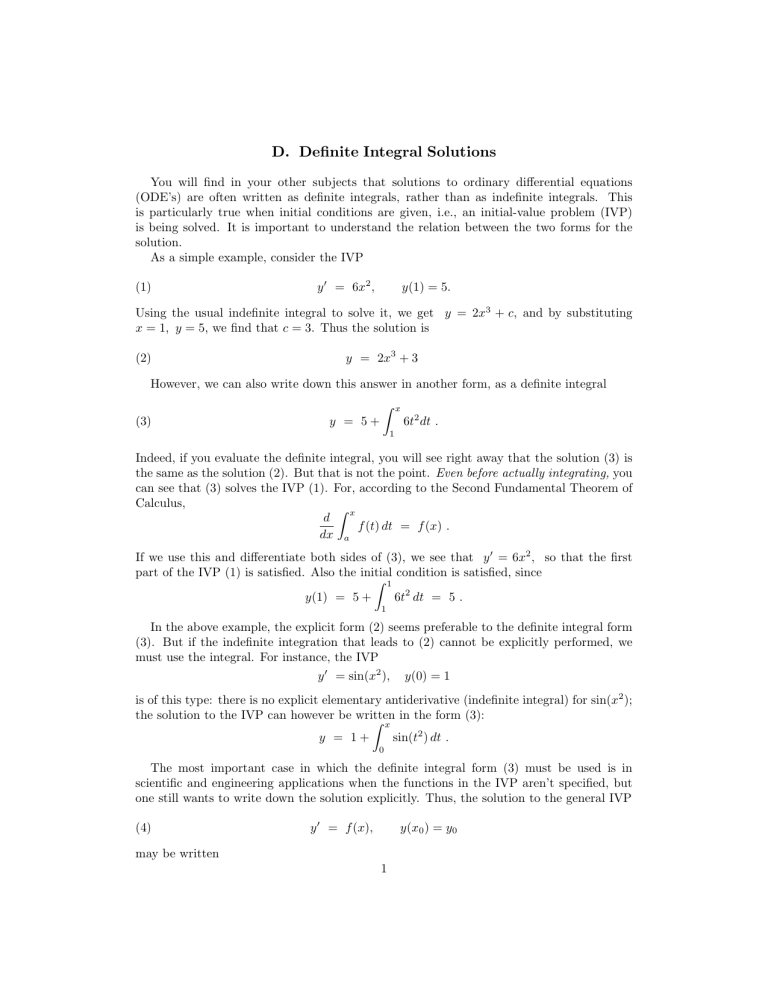
D. Definite Integral Solutions
You will find in your other subjects that solutions to ordinary differential equations
(ODE’s) are often written as definite integrals, rather than as indefinite integrals. This is particularly true when initial conditions are given, i.e., an initial-value problem (IVP) is being solved. It is important to understand the relation between the two forms for the solution.
As a simple example, consider the IVP
(1) y ′ = 6 x
2
, y (1) = 5 .
Using the usual indefinite integral to solve it, we get y = 2 x 3 x = 1 , y = 5, we find that c = 3. Thus the solution is
+ c , and by substituting
(2) y = 2 x 3 + 3
(3)
However, we can also write down this answer in another form, as a definite integral
Z x y = 5 + 6 t 2 dt .
1
Indeed, if you evaluate the definite integral, you will see right away that the solution (3) is the same as the solution (2). But that is not the point.
Even before actually integrating, you can see that (3) solves the IVP (1). For, according to the Second Fundamental Theorem of
Calculus, d
Z x f ( t ) dt = f ( x ) .
dx a
If we use this and differentiate both sides of (3), we see that y ′ = 6 x 2 , so that the first y (1) = 5 +
1
1
6 t
2 dt = 5 .
In the above example, the explicit form (2) seems preferable to the definite integral form
(3). But if the indefinite integration that leads to (2) cannot be explicitly performed, we must use the integral. For instance, the IVP y ′ = sin( x
2 ) , y (0) = 1 is of this type: there is no explicit elementary antiderivative (indefinite integral) for sin( x 2 ); y = 1 +
0 x sin( t 2 ) dt .
The most important case in which the definite integral form (3) must be used is in scientific and engineering applications when the functions in the IVP aren’t specified, but one still wants to write down the solution explicitly. Thus, the solution to the general IVP
(4) may be written y ′ = f ( x ) , y ( x
0
) = y
0
1
2 18.03 NOTES
(5) y = y
0
+
Z x x 0 f ( t ) dt .
say something like, “the solution is y = f ( x ) dx + c , where the constant c is determined by the condition y ( x
0
) = y
0
” — an awkward and not explicit phrase.
In short, the definite integral (5) gives us an explicit solution to the IVP; the indefinite integral only gives us a procedure for finding a solution, and just for those cases when an explicit antiderivative can actually be found.
M.I.T. 18.03 Ordinary Differential Equations
18.03 Notes and Exercises c Arthur Mattuck and M.I.T. 1988, 1992, 1996, 2003, 2007, 2011
1

